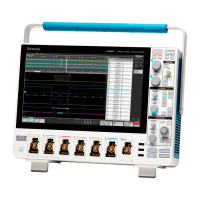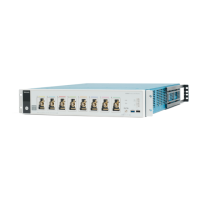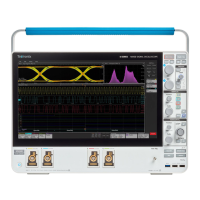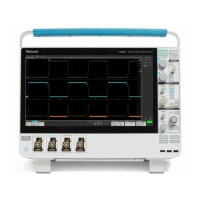Field or control Description
Source Lists the source channel.
Internal source (Edge trigger): This provides a 60 Hz trigger source that can cause the oscilloscope to
trigger 60 times per second.
AUX In: The AUX In (auxiliary) edge trigger source provides an extra trigger signal source when
you need to use the input channels for other signals. For example, you might want to trigger on a
clock while displaying related logic signals. The AUX In input cannot be displayed and is only for the
purpose of triggering.
Coupling Set the conditioning to apply to the source signal trigger circuit from the source signal.
DC coupling passes all input signals directly to the trigger circuitry
.
HF Reject coupling attenuates signals above 50 kHz before passing the signal to the trigger circuitry.
LF Reject coupling attenuates signals below 50 kHz before passing the signal to the trigger circuitry.
Noise Reject coupling provides stable triggering by increasing the trigger hysteresis. Increased
hysteresis reduces the trigger sensitivity to noise so may require greater signal amplitude.
Level Sets the amplitude level that the signal must pass through to be considered a valid transition.
Slope Sets the signal transition direction to detect. (rising, falling, or either direction).
Mode & Holdoff panel (Edge Trigger configuration menu) fields and controls
Field or control Description
Trigger Mode The trigger mode determines how the instrument behaves in the absence or presence of a trigger
event:
Auto trigger mode enables the instrument to acquire and display a waveform even if a trigger does not
occur
. Auto mode uses a timer that starts when the acquisition is started, and the pretrigger information
is obtained. If a trigger event is not detected before the timer times out, the instrument forces a trigger.
The length of time it waits for a trigger event depends on the time base setting.
Normal trigger mode enables the instrument to acquire a waveform only when it is triggered. If no
trigger occurs, the last waveform record acquired remains on the display. If no last waveform exists, no
waveform is displayed.
Force Trigger Forces a trigger event regardless of whether the waveform meets any trigger conditions.
Holdoff Time Tap the Holdoff Time field and use the multipurpose knob to adjust the holdoff time value. Or
double-tap the field and use the virtual keypad to enter a time holdoff period. Trigger holdoff sets the
amount of time the oscilloscope waits after a trigger event before detecting and triggering on the next
trigger event. Use this option when the signal that you want to trigger on has several possible trigger
points or is a burst signal.
Act on Trigger Tap the Act on Trigger button to configure the actions the instrument must take when a trigger event
occurs.
See Act On Event configuration menu on page 105 for the available fields and controls.
Menus and dialog boxes
2 Series MSO MSO24 and MSO22 213
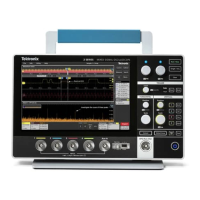
